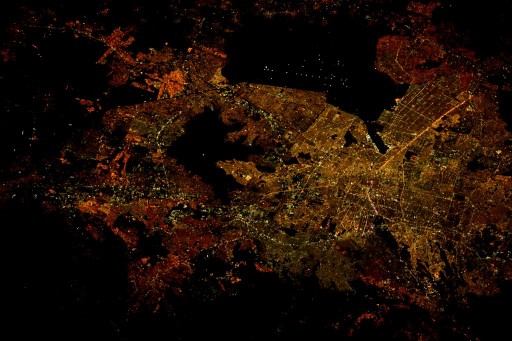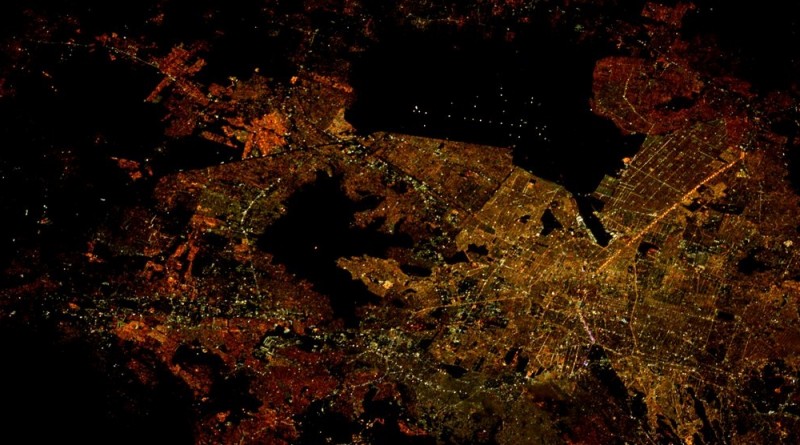ISS Operations Update – May 5, 2016

Experiments:
Microbial Observatory-1 – Experiment Operations [The MO-1 study will acquire air and surface samples from various locations of the International Space Station to observe which bacteria are present. This collection will last for one year to allow scientists to look at the types of microbes that can survive in the space environment and study their changes over time. This data is valuable for the assessment of risks to crew health and it also allows a close look at the way microbes adept in space as compared to mechanisms known from Earth-based studies.]
Strata-1 Data Transfer for Downlink [Strata-I investigates the properties and behavior of regolith, the impact-shattered soil found on asteroids, comets, the Moon and other airless bodies. Regolith is different from soil on Earth in that it contains no living material. The behavior of regolith in microgravity is virtually unknown and has obvious implications when attempting to anchor a spacecraft in regolith. Strata-1 also studies how regolith interacts with spacecraft and spacesuit material and whether it is possible to process large volumes of regolith.]
NanoRack Platform-2 Modules Removal
Identification – Micro-Accelerometer Data Download [The Identification Payload records structural dynamics data inside the individual modules of the Russian Segment to provide structural data to improve spacecraft design.]
Otklik Experiment Hardware Check [Otklik uses several piezoelectric sensors to track the impacts of small particles and debris on the exterior of the International Space Station to monitor the abundance of debris events and a series of other characteristics. These measurements provide valuable data for the construction of future spacecraft]
Dose Tracker [Dose Tracker uses logs kept by crew members on the frequency of medication intake before, during and after a mission also with regards to side effect qualities frequencies and severities. This data is needed to address theories of medication ineffectiveness during flight and unusual side effects experienced in the flight environment.]
Seismoprognoz Data Download [Seismoprognoz will measure the temporal and spatial scales of ionospheric disturbances caused by seismic phenomena in order to develop algorithms to detect plasma features of earthquakes and anthropogenic impacts from space-based instruments. The payload consists of an external monoblock, a Data Control and Acquisition Module, an attachment kit, flash memory and associated cables and connectors.]
Fluid Shifts – Equipment Preparation [Fluid Shifts Before, During and After Prolonged Space Flight and Their Association with Intracranial Pressure and Visual Impairment. Known as the Fluids Shift study, this experiment is one of the most complex integrated experiments ever performed on ISS using pieces of US and Russian hardware to attempt to quantify the amount of fluid shifting from the lower body to the upper body when transitioning from a gravity to a microgravity environment. This will also lead to an understanding of effects of the fluid shift on fluid pressure in the head, changes to vision and eye structure. Effects on the eye caused by elevated intracranial pressure include globe flattening, choroidal folds, and alteration of the optic nerve.]
Other Activities:
Nominal Inspections/Servicing Tasks (Morning Inspection, Caution & Warning Panel Check, Sozh System Maintenance) (Russian Crew)
Pressurized Mating Adapter (PMA1)/Node 1 Intermodule Ventilation (IMV) Reconfiguration: After the last two days of reconfiguration work concerning air flow between the RSOS and USOS, the crew continued by covering the IMV diffuser at NOD1OS4 with Gray Tape and fabricated a cone around the diffuser section so that airflow is directed back into the Russian Segment. Airflow between the two segments is being redirected to achieve a better CO2 removal throughout ISS.
Portable Emergency Provisions (PEPs) Inspection
Dragon Cargo Transfers: 6 Hours remain until Dragon’s scheduled departure on May 11
Robotics: Canadarm2 was positioned to complete a survey of defects that had been intentionally introduced in Dragon’s Thermal Protection System in a study of the feasibility of in-orbit inspections of future Commercial Crew Vehicles. After the inspection, Canadarm2 was commanded to grapple the Dragon spacecraft to set up for its scheduled unberthing on May 11.
PAO Event

